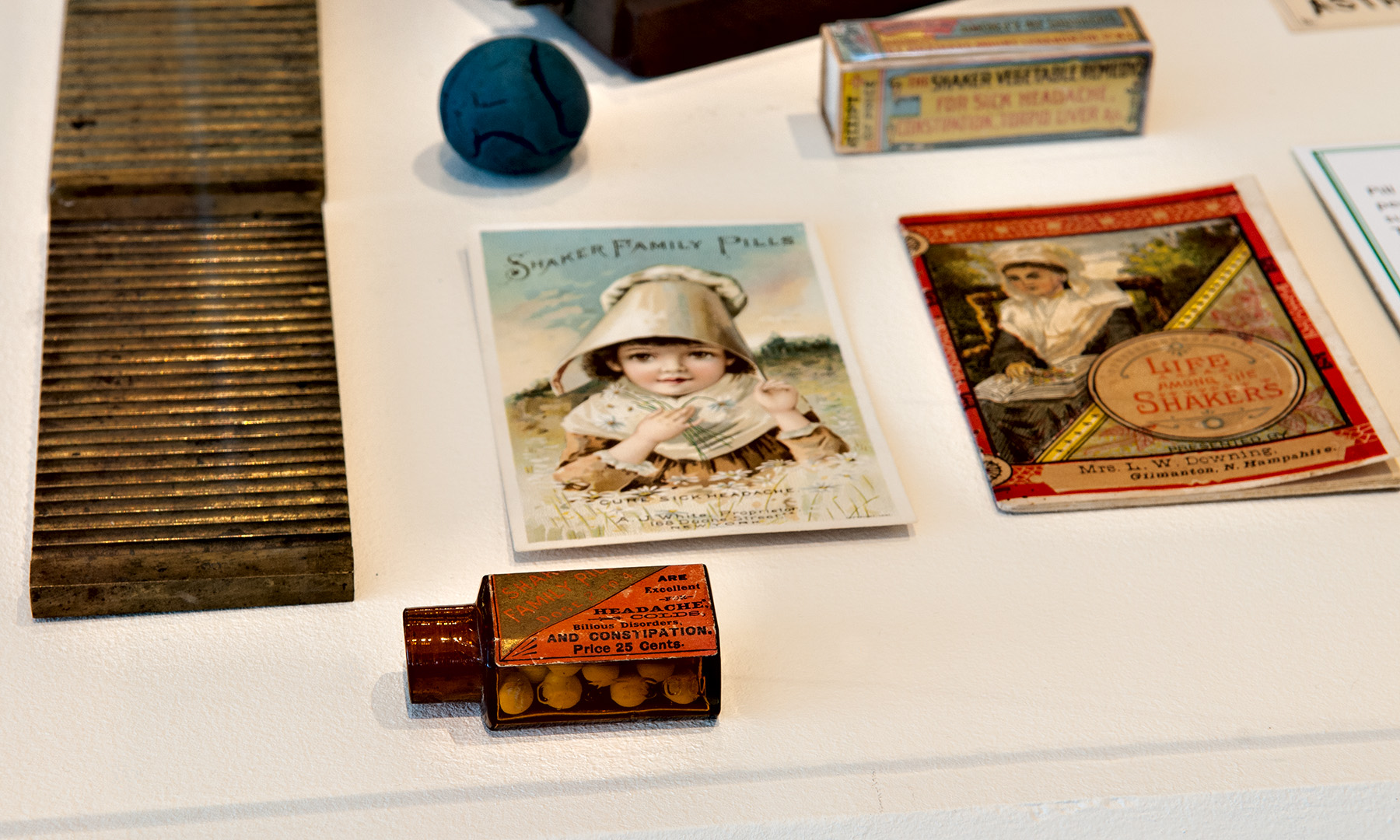
In our society seemingly obsessed with healthy, natural ingredients in everything from food to shampoo, herbal medicines and supplements might seem like a contemporary trend. But their history in fact goes back to the 18th century.
Burke Library is currently displaying an exhibit, “Herb Doctors and Evangelists,” featuring dozens of books, pamphlets and artifacts surrounding the use of botanical medicines in the United States in the 18th and 19th centuries. The goal of this exhibit, according to Christian Goodwillie, director of special collections at Burke Library, is to engage with academic programs at Hamilton. As it turns out, there was already avid interest in the history of botanical medicines in the science department.
Silas D. Childs Professor of Biology David Gapp noted that he had been exploring pharmaceutical drugs with his students and in particular wanted to focus on botanical medicines. He is even trying to create a medicinal herb garden in his “Food for Thought” class. Gapp stated that it’s necessary for his biology students to “understand the connections and the histories in effect on botanic based medicines” since “more than 50% of therapeutically used drugs in the United States are either derived from plants or based on plant compounds.”
As Gapp and Goodwillie have demonstrated through this exhibit, the history of medicine, and in particular the adoption of botanic based medicine in the United States, is quite fascinating. For instance, a major factor in the early growth of medical knowledge was the “Doctrine of correspondence.” This doctrine essentially stated that for every ailment that God created, there is also a natural cure, and that one might find this cure in a plant that somewhat resembles the ailing body part.
For example, to solve brain-related health problems, people would turn to walnuts since the insides somewhat resemble brains. While this strategy did not work for every ailment and did not prove all herbs to have a medicinal purpose, some plants were found to have medicinal properties such as autumn crocus, a plant whose compounds have been used to treat gout since as early as the 6th century.
However, up to the end of the 18th century “regular” doctors offered a different, more harsh perspective on medicine. They prescribed “heroic” treatments such as the ingestion of metals and bloodletting to affluent people, such as George Washington and even a King of England. In contrast, herbal medicines were seen as the “poor-man’s” treatment. As such, they were developed more so in sparsely populated areas including many towns in upstate New York purely out of necessity.
Since people were spreading across the country, and moving into less populated areas, at a faster rate than civilization was developing, a “do-it-yourself” attitude became necessary. This attitude, coupled with the rise of evangelical Christianity, led to more and more people exploring the continent and learning from Native Americans about herbal medicines that they could use to heal themselves. While we might now balk at this once common practice, it actually had relatively high success rates. Samuel Thompson (1769-1843), a notable proponent of herbal medicines, purportedly saved himself from measles and his wife from pregnancy-related illness through his knowledge of herbs. In contrast, traditional doctors such as Benjamin Rush were still practicing bloodletting through the end of the 18th century.
Despite the relative success that herbal medicines had, the industry emerged in such a way that opened the door for fraudulent doctors and drug-peddlers. At that time, there were no checks, no peer-reviews, and no studies on medical processes or drugs. A person could patent medicines by simply listing the ingredients. They could then sell it and advertise its health benefits. Gapp stated that this “patent medicine business [...] was strictly money-making.” People would also advertise medicines and books by adding the word “Indian” into the title, since Indians were believed to have superior knowledge regarding plant properties. This marketing scheme arguably made people more willing to buy those books and medicines.
Today, we still feel reverberations of this desire for botanical medicines. The history of herbal medicines has “morphed into the current supplement industry,” Christian Goodwillie noted. This supplement industry in the United States is completely unchecked by the Food and Drug Administration. In fact, Gapp cited a recent study conducted by the New York attorney general, which found that supplements from major suppliers (such as Wal-Mart) often don’t contain the basic herb or vitamin that the packaging advertises.
Clearly there are some exploitative practices in the current supplement industry, but does that mean that the entire field should be disregarded? Goodwillie and Gapp would argue that, no, there are still clear, documented, scientific benefits from many herbs and that the question is not if they have any use, but rather how we can regulate the field to ensure that proper care is taken to achieve ideal effects. After all, Gapp pointed out that “the history of drugs is the history of herbal medicine.”
Gapp stated that the real value in this exhibit is that it helps us understand that people in the 18th and 19th centuries were able to draw so much out of the natural world to comfort and help themselves. We have that available to us as well. In addition, Goodwillie commented that there are “things that preceded us not too long ago, and yet they seem in some cases so remote,” and it’s important to keep that in perspective when thinking about the current pharmaceutical industry and in reflecting on how we interact with the natural world.
Posted February 27, 2015
